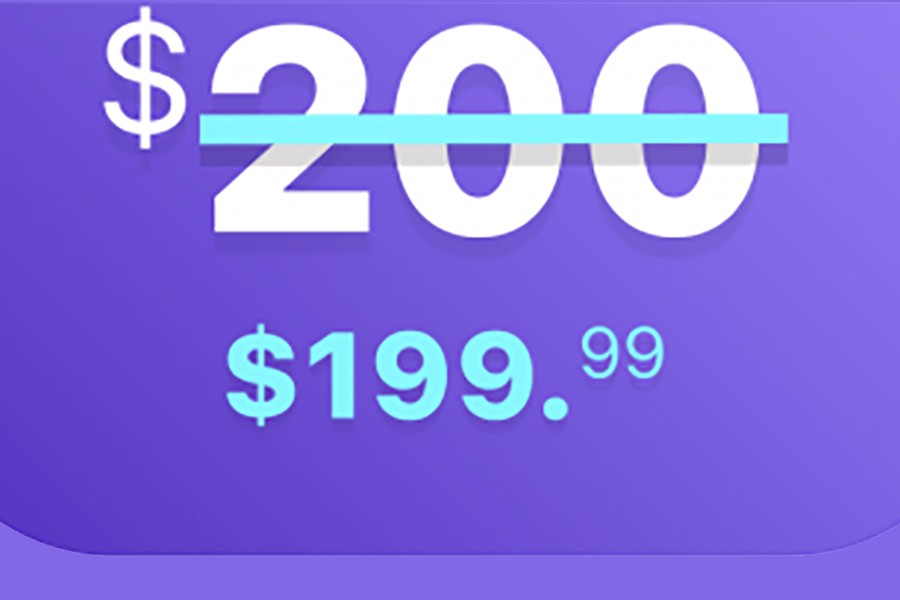Eid Big Sale! Winter Sale! New Year Sale! Buy One Get One Free! 70 per cent Off in Many Products! These are some of the offers that are common nowadays in market places as well as online. This is a kind of emotional way to sell products to consumers. And this is called 'psychological pricing', a business strategy to attract consumers to sell their products.
How business motives work in this strategy and how consumers react to this remain a business concern. Every e-commerce business owner spends a substantial amount of time in finding the best price strategy for their business. In many cases, psychological pricing is more important than the actual price determined by the market and the businessmen who can understand better usefulness of this pricing, comes out as winner. However, it can be a problem if consumers are extremely rational.
At the beginning, many of the businessmen give a long thought on how to set prices and many of them are still finding the best way to do so. Price is one kind of indicator that allows a businessman or an entrepreneur to gain and quantify profit. There are various tactics for psychological pricing, that have efficient impact on the consumer behaviour.
For instance, price ending is an important pricing strategy that has been used by retailer for a long time. Target return pricing is a pricing strategy used by e-commerce experts to set the price of the product based on the expected rate of return. For setting the pricing strategy, the first step is how one wants to make profit from sales of product.
Since the beginning of the business, many set the price at a high level to show that the products on display are of good quality. They often gradually decrease the price to grab more customers. Sale on bundle product is quite an impressive price strategy, where many of the products of different prices sell at one price.
Small changes in prices can influence the customers. "Buy One Get One Free" is the price strategy where consumers pay for one product and gets another of the same or other product. This strategy is mostly applied at restaurants and for selling makeup products. That basically works on customer greed, where he or she wants to get a free item at one price. To maximise this opportunity the seller should be more creative. Comparative pricing strategy is the most important pricing strategy. In this strategy two similar products offering with different prices make one product more attractive than others.
In the fashion houses, as it is observed, some consumers think that pricy products have some quality than others. Rounded figure price, descending ordering, visually highlighting different prices and many more strategy works for psychological pricing.
In Bangladesh, Bata and Apex are the two renowned footwear brands. Bata Bangladesh is a public limited company, which has 51-49 per cent share with the government of Bangladesh. Since the beginning, Bata has the ability to capture customers with ensuring their quality products. Whenever the customers hear the name of Bata, the first thing that comes to their mind is the high quality of products. At present, Bata has started discount in leather shoes, such as: End of the Season discount 70 per cent, New Arrival of this week which is almost Tk 300 less from the previous price. This is an example of psychological pricing.
Apex Footwear Limited is the leading footwear manufacturer leather company in Bangladesh. For some time, it maintained high price ensuring high quality of products. According to Apex, local footwear had 21 per cent growth rate in 2017 over the previous year's sale. It has some seasonal promotional strategy giving sales, discount on the products. Since customers are confident about its high quality, the promotional strategies are bringing success for Apex. Like Bata and Apex there are many online shop owners that are using psychological pricing. Clothing and makeup brands include Shoppers Community, Pinks n' Curls, Trendy Shareez, and Shajgoj.
Therefore, the main motive of psychological pricing is to compete with the other sellers. But there are some problems in psychological pricing. Using fractions in this process, it would be difficult to calculate the total amount or to make changes in such prices. When the consumers are rational, use of psychological pricing can create a problem. They would like to be very faithful on the base prices rather than fractional pricing. Rational consumers can make huge difference on business policy. In the long run, it may ruin business reputation. A rational consumer can affect purchasing power of another consumer, which may create obstacle to pricing.
A seller setting fraction prices at slightly low level can easily attract consumers for purchasing products and thus make profit. Above all, it can give competition to other sellers and often create barriers to new sellers in the market.
This is the study of consumer behavior, where consumer reacts to different pricing for different product. Besides, colour, preciseness, length, decoration and all that can attract consumers. But all strategies are not applicable for all types off businesses. Locality preference, income, willingness to pay and other indicators also work. Businesses should make psychological pricing strategy in accordance with consumer preference and of course business motives.
But some case studies show it doesn't work since it is sometimes difficult to define demand because of price volatility. Keeping customers happy, understanding targetted customer, creating customer loyalty, generating more sales, creating competition, analysing consumer behaviour, and above all boosting profit are the advancement of psychological pricing strategy. For maintaining this advancement, one should be creative, foreseeing, and able to take new initiatives.
Sanjida Akter Shompa is Research Intern, South Asian Network on Economic Modeling (SANEM)


